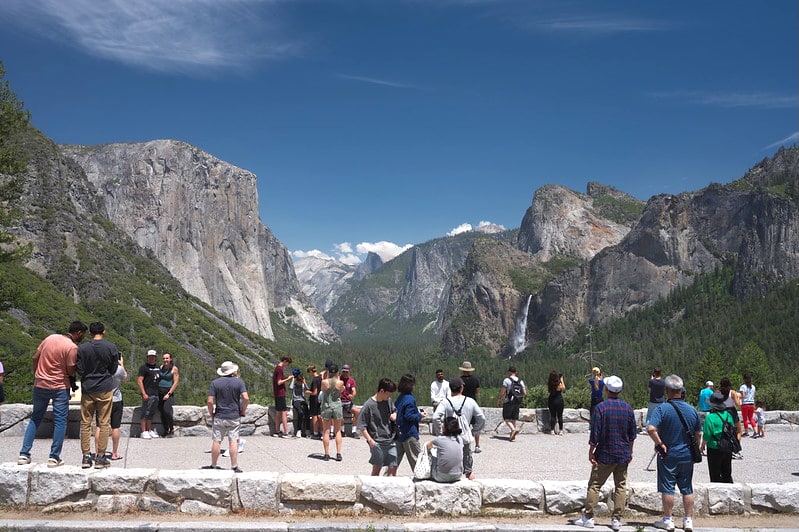This post was originally published on Eco Watch
In 2024, the U.S. National Parks received a record-high visitor turnout, even higher than the previous record set in 2016. But based on an internal memo shared by the group Resistance Rangers, which is made up of current and former National Park Service (NPS) workers, NPS staff have been told not to share external communications about the record number of visits.
The information is publicly available on the NPS Visitation Statistics Dashboard, which shared that there were 331.9 million visits to National Parks sites in 2024, up from the previous record of 330,971,689 set in 2016. This number also increased by 6.36 million visits, or 2%, compared to visits in 2023.
Yet according to the internal memo shared by Resistance Rangers, NPS workers were advised that there would be no external communications rollout. The internal memo noted that parks could share the visitor number info on their websites if “that is the park’s standard process (e.g. parks that post monthly visitation reports), but should not issue a press release or other proactive communications, including social media posts.”
Further, staff was advised to respond to reporters by simply stating the numbers and redirecting them to the Integrated Resource Management Applications (IRMA) website. As SFGATE reported, this memo was different from previous years, when NPS has put out both reports on the number of visitors and on how these visits can economically benefit the areas surrounding national park sites.
Kati Schmidt, communications director for National Parks Conservation Association (NPCA), told SFGATE that the annual visitor reports typically involve a lot of external outreach for NPS and individual parks.
“The silence is a little weird,” Schmidt wrote in an email to SFGATE.
As the parks reach record-high attendance, both Resistance Rangers and NPCA have pointed out that NPS is under threat with recent mass firings and planned NPS office closings.
“At the same time, 1,000 probationary employees were fired last month and have not been reinstated, despite a federal court ruling finding the firings illegal. At least 700 employees have taken the deferred resignation (‘fork’) option,” Resistance Rangers wrote in a press release. “Phase 1 Reduction in Force plans are due on March 13, despite the NPS being critically understaffed even before the recent cuts. This leaves national parks critically understaffed as they approach the busiest time of year, despite being more popular than ever.”
As NPCA reported, the current administration has planned to close at least 34 NPS facilities, including eight visitor centers, climate-controlled facilities with sensitive artifacts and emergency facilities.
“These moves by the administration are pushing our parks past the point of no return,” said Theresa Pierno, president and CEO of NPCA. “For over a century, Americans have loved and fought to protect our national parks. This administration’s actions are a betrayal of that legacy. The American people expect leaders to protect our parks, not dismantle them.”
Visitors at Yosemite National Park in California on June 9, 2024. John Loo / Flickr
As SFGATE reported, the memo to not share record visitor statistics externally raises concerns over directives coming from the administration, not NPS, amid the recent firings and planned facility closures.
“The suppression of this data would not be coming from anyone in the NPS, which proudly displays the numbers every year (just look back at the last 20 years!),” Jonathan Jarvis, former director of NPS, told SFGATE. “This decision would be forced on NPS by the DOI politicals or DOGE, worried about the high visitation numbers, the economic value, and the bad press coming from firing so many NPS employees.”
According to NPS data, 2024 visits expanded across the board, with new visitation records set at 28 parks and more visitors coming to park sites throughout the year (not just during peak seasons). Thirty-eight parks also had visitor numbers higher than the 10-year average for every single month of 2024.
The Golden Gate National Recreation Area had the highest number of visits, nearly 17.2 million, of any NPS site, while the Great Smoky Mountains was the most-visited National Park with 12.2 million visits. Other top-visited National Parks included Zion (4.94 million visits), Grand Canyon (4.91 million), Yellowstone (4.74 million) and Rocky Mountain (4.15 million).
The post U.S. National Parks Saw Record Attendance in 2024, but Staff Were Told Not to Publicize the Achievement appeared first on EcoWatch.





0 Comments